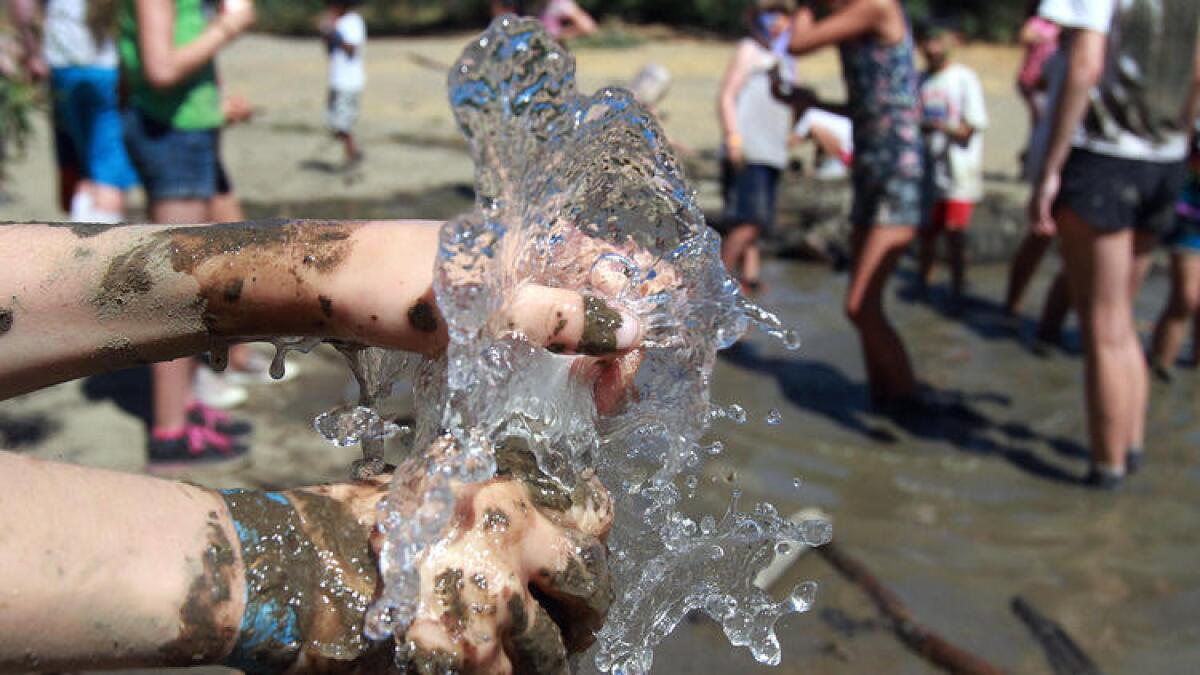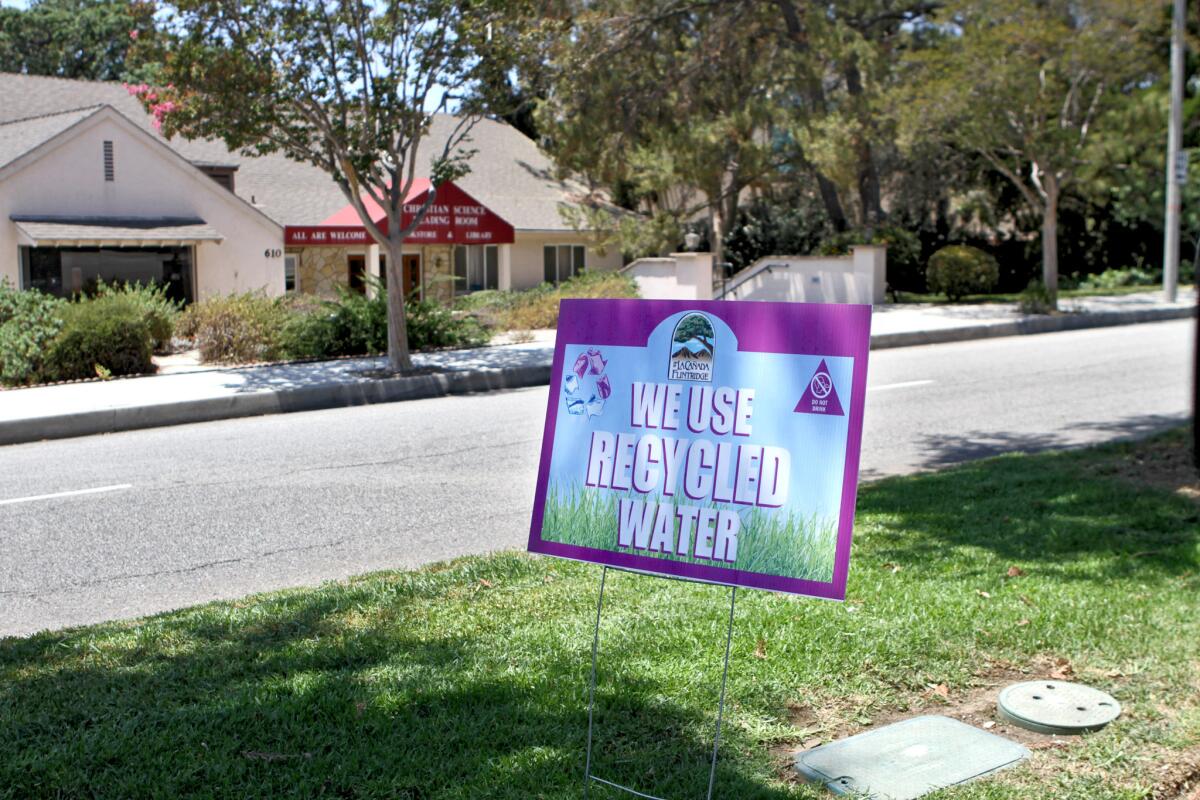As state loosens grip on conservation rules, La Cañada utilities make plans for a dry future

A pipe slowly gurgles water that a Tom Saywer Camp camper uses to rinse mud off her hands during MUD time in La Canada Flintridge on Tuesday, August 5, 2014.
- Share via
A decade ago, before the state of California declared itself to be entering a prolonged drought period, most La Cañada Flintridge residents were pretty loose with their taps.
Customers served by Foothill Municipal Water District, an agency that imports water from Metropolitan Water District of Southern California, used an average of about 296 gallons of water per person in a single day in 2006-07. One of the FMWD’s member agencies stood out for its consumption: Valley Water Co. customers used a staggering 435 gallons per person per day, according to the district’s figures.
But today, in the wake of emergency conservation and rationing efforts imposed by the state and a comprehensive education and outreach campaign conducted by local and retail water agencies, the local numbers are looking a lot lower.
We don’t know what next year will bring, or the next year or five years from now. We’re not in an emergency now, but we’re not out of the woods.
— Foothill Municipal Water District General Manager Nina Jazmadarian
Foothill Municipal Water District General Manager Nina Jazmadarian attributed the downward trend to agency and individual drought response in a new, drier reality.
“Droughts are becoming a way of life here in Southern California,” Jazmadarian said. “I think people understand now that even when we’re doing well, we’re not done conserving.”
FMWD reports the average customer use so far this year is about 169 gallons of water per day, a 43% decline from 2006-07 figures and 32% lower than reported use in 2013-14. Retail agencies identified by the state as excessive water users saw similar decreases.
Valley Water, for example, reduced its daily per capita rate to 268 gallons, down from 386 gallons per person in 2013-14, the time period the State Water Resources Control Board used as a benchmark year against which to measure agencies’ conservation progress. Crescenta Valley Water customers now use an average of 92 gallons per day, compared to 133 in 2013-14.

There are multiple signs like this one spaced out along the center median on Foothill Boulevard, proclaiming the city of La Cañada Flintridge uses recycled water to irrigate the public lawns.
News of the reductions comes as California shifts away from emergency mandates issued in April 2015 in favor of more locally controlled, long-term drought response efforts. An executive order issued last month by Gov. Jerry Brown called for local water agencies to develop their own reductions on an as-needed basis.
To determine what savings may be in order, retail agencies are being asked to see how average demands from 2013-14 stack up against anticipated supplies forecast for the next three years, assuming a continued dry hydrology. Starting this month, it will be up to individual agencies to make up for any gaps between the two.
The new strategy will replace the numeric reduction mandates agencies have been passing onto consumers for the past year.
“It allows for more local customization, to account for local circumstances; I think that’s a good thing” said Rich Atwater, president of FMWD’s Board of Directors and director of Metropolitan Water District.
Follow us on Twitter to stay up to date on your community>>
Under the new plan, any potable water that goes unused in a given year will be stored in reservoirs and local groundwater aquifers for future use. As Lake Mead and the Colorado River hit record low levels, and weather forecasters brace residents for a dry La Nina winter, officials say stored water will become critical.
“We don’t know what next year will bring, or the next year or five years from now,” Jazmadarian said. “We’re not in an emergency now, but we’re not out of the woods.”
--
Sara Cardine, sara.cardine@latimes.com
Twitter: @SaraCardine
